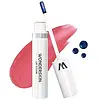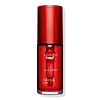What's inside
What's inside
 Key Ingredients
Key Ingredients

 Benefits
Benefits

 Concerns
Concerns

 Ingredients Side-by-side
Ingredients Side-by-side

Water
Skin ConditioningPentylene Glycol
Skin ConditioningButylene Glycol
HumectantMica
Cosmetic ColorantAlgin
MaskingGlycerin
HumectantIndigofera Tinctoria Leaf Extract
Skin ConditioningCeramide AP
Skin Conditioning1,2-Hexanediol
Skin ConditioningCaprylyl Glycol
EmollientHydroxyethyl Acrylate/Sodium Acryloyldimethyl Taurate Copolymer
Emulsion StabilisingSqualane
EmollientCaprylyl Glucoside
CleansingAroma
Polysorbate 80
EmulsifyingTin Oxide
AbrasiveLactic Acid
BufferingGlucose
HumectantCI 77891
Cosmetic ColorantCI 45380
Cosmetic ColorantCI 42090
Cosmetic ColorantCI 16035
Cosmetic ColorantCI 19140
Cosmetic ColorantCI 17200
Cosmetic ColorantWater, Pentylene Glycol, Butylene Glycol, Mica, Algin, Glycerin, Indigofera Tinctoria Leaf Extract, Ceramide AP, 1,2-Hexanediol, Caprylyl Glycol, Hydroxyethyl Acrylate/Sodium Acryloyldimethyl Taurate Copolymer, Squalane, Caprylyl Glucoside, Aroma, Polysorbate 80, Tin Oxide, Lactic Acid, Glucose, CI 77891, CI 45380, CI 42090, CI 16035, CI 19140, CI 17200
Water
Skin ConditioningGlycerin
HumectantAloe Barbadensis Leaf Juice
Skin ConditioningRubus Idaeus Fruit Water
MaskingPentylene Glycol
Skin ConditioningPhenoxyethanol
PreservativeParfum
MaskingCaesalpinia Spinosa Gum
Skin ConditioningSodium Citrate
BufferingAmmonium Glycyrrhizate
MaskingCarbomer
Emulsion StabilisingPPG-26-Buteth-26
Skin ConditioningEthylhexylglycerin
Skin ConditioningTamarindus Indica Seed Gum
Emulsion StabilisingPEG-40 Hydrogenated Castor Oil
EmulsifyingSodium Hyaluronate
HumectantSodium Dehydroacetate
PreservativeButylene Glycol
HumectantPotassium Sorbate
PreservativeSodium Benzoate
MaskingCitric Acid
BufferingFurcellaria Lumbricalis Extract
Skin ConditioningCamellia Sinensis Leaf Extract
AntimicrobialLapsana Communis Flower/Leaf/Stem Extract
Skin ConditioningMaris Sal
Skin ConditioningMica
Cosmetic ColorantTin Oxide
AbrasiveSilica
AbrasiveCalcium Aluminum Borosilicate
Calcium Sodium Borosilicate
Synthetic Fluorphlogopite
CI 77891
Cosmetic ColorantCI 77491
Cosmetic ColorantCI 15850
Cosmetic ColorantCI 15985
Cosmetic ColorantCI 42090
Cosmetic ColorantCI 75470
Cosmetic ColorantCI 19140
Cosmetic ColorantCI 45410
Cosmetic ColorantCI 73360
Cosmetic ColorantCI 17200
Cosmetic ColorantCI 45380
Cosmetic ColorantCI 77742
Cosmetic ColorantWater, Glycerin, Aloe Barbadensis Leaf Juice, Rubus Idaeus Fruit Water, Pentylene Glycol, Phenoxyethanol, Parfum, Caesalpinia Spinosa Gum, Sodium Citrate, Ammonium Glycyrrhizate, Carbomer, PPG-26-Buteth-26, Ethylhexylglycerin, Tamarindus Indica Seed Gum, PEG-40 Hydrogenated Castor Oil, Sodium Hyaluronate, Sodium Dehydroacetate, Butylene Glycol, Potassium Sorbate, Sodium Benzoate, Citric Acid, Furcellaria Lumbricalis Extract, Camellia Sinensis Leaf Extract, Lapsana Communis Flower/Leaf/Stem Extract, Maris Sal, Mica, Tin Oxide, Silica, Calcium Aluminum Borosilicate, Calcium Sodium Borosilicate, Synthetic Fluorphlogopite, CI 77891, CI 77491, CI 15850, CI 15985, CI 42090, CI 75470, CI 19140, CI 45410, CI 73360, CI 17200, CI 45380, CI 77742
Ingredients Explained
These ingredients are found in both products.
Ingredients higher up in an ingredient list are typically present in a larger amount.
Butylene Glycol (or BG) is used within cosmetic products for a few different reasons:
Overall, Butylene Glycol is a safe and well-rounded ingredient that works well with other ingredients.
Though this ingredient works well with most skin types, some people with sensitive skin may experience a reaction such as allergic rashes, closed comedones, or itchiness.
Learn more about Butylene GlycolCi 17200 is a synthetic reddish-purple dye.
CI 19140 is also known as Tartrazine. Tartrazine is a synthetic dye used in cosmetics, foods, and medicine to add a yellow color.
Tartrazine is created from petroleum and is water-soluble.
Some people may experience allergies from this dye, especially asthmatics and those with an aspirin intolerance.
Learn more about CI 19140Ci 42090 is a synthetic dye created from petroleum. It is used to give a bright blue color to cosmetics, medicine, and food.
Ci 45380 is a synthetic dye that comes from coal or tar sources. Due to this, it is often used in small quantities.
A common name for this dye is Red 22. Red 22 imparts a warm reddish color.
Similar to Red 27, this dye changes color based on pH and moisture levels.
This dye is colorless when dry but turns pink between pH levels 0.0 to ~3.0.
Learn more about CI 45380Ci 77891 is a white pigment from Titanium dioxide. It is naturally found in minerals such as rutile and ilmenite.
It's main function is to add a white color to cosmetics. It can also be mixed with other colors to create different shades.
Ci 77891 is commonly found in sunscreens due to its ability to block UV rays.
Learn more about CI 77891Glycerin is already naturally found in your skin. It helps moisturize and protect your skin.
A study from 2016 found glycerin to be more effective as a humectant than AHAs and hyaluronic acid.
As a humectant, it helps the skin stay hydrated by pulling moisture to your skin. The low molecular weight of glycerin allows it to pull moisture into the deeper layers of your skin.
Hydrated skin improves your skin barrier; Your skin barrier helps protect against irritants and bacteria.
Glycerin has also been found to have antimicrobial and antiviral properties. Due to these properties, glycerin is often used in wound and burn treatments.
In cosmetics, glycerin is usually derived from plants such as soybean or palm. However, it can also be sourced from animals, such as tallow or animal fat.
This ingredient is organic, colorless, odorless, and non-toxic.
Glycerin is the name for this ingredient in American English. British English uses Glycerol/Glycerine.
Learn more about GlycerinMica is a naturally occurring mineral used to add shimmer and color in cosmetics. It can also help improve the texture of a product or give it an opaque, white/silver color.
Serecite is the name for very fine but ragged grains of mica.
This ingredient is often coated with metal oxides like titanium dioxide. Trace amounts of heavy metals may be found in mica, but these metals are not harmful in our personal products.
Mica has been used since prehistoric times throughout the world. Ancient Egyptian, Indian, Greek, Roman, Aztec, and Chinese civilizations have used mica.
Learn more about MicaPentylene glycol is typically used within a product to thicken it. It also adds a smooth, soft, and moisturizing feel to the product. It is naturally found in plants such as sugar beets.
The hydrophilic trait of Pentylene Glycol makes it a humectant. As a humectant, Pentylene Glycol helps draw moisture from the air to your skin. This can help keep your skin hydrated.
This property also makes Pentylene Glycol a great texture enhancer. It can also help thicken or stabilize a product.
Pentylene Glycol also acts as a mild preservative and helps to keep a product microbe-free.
Some people may experience mild eye and skin irritation from Pentylene Glycol. We always recommend speaking with a professional about using this ingredient in your routine.
Pentylene Glycol has a low molecular weight and is part of the 1,2-glycol family.
Learn more about Pentylene GlycolTin Oxide is an inorganic oxide used to add opacity and volume to a product. In nature, it is already found in mineral form. The main ore of tin is an opaque and shiny mineral called casseterite.
Tin Oxide helps remove translucency in a product, or make it more opaque. Besides adding opacity, tin oxide is used for bulking to add volume.
Water. It's the most common cosmetic ingredient of all. You'll usually see it at the top of ingredient lists, meaning that it makes up the largest part of the product.
So why is it so popular? Water most often acts as a solvent - this means that it helps dissolve other ingredients into the formulation.
You'll also recognize water as that liquid we all need to stay alive. If you see this, drink a glass of water. Stay hydrated!
Learn more about Water